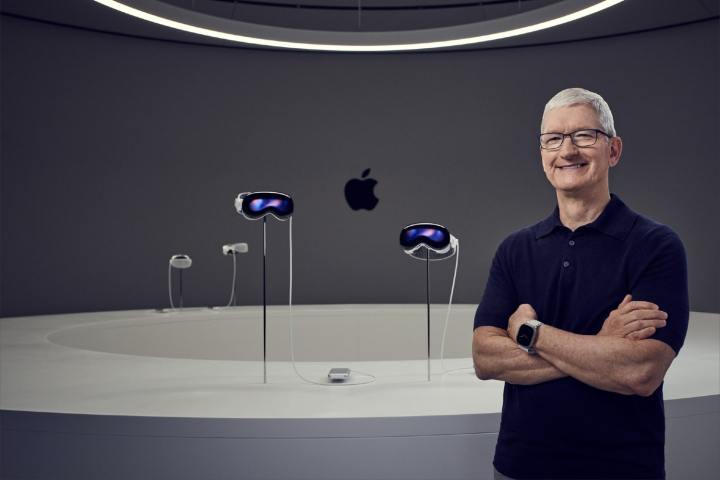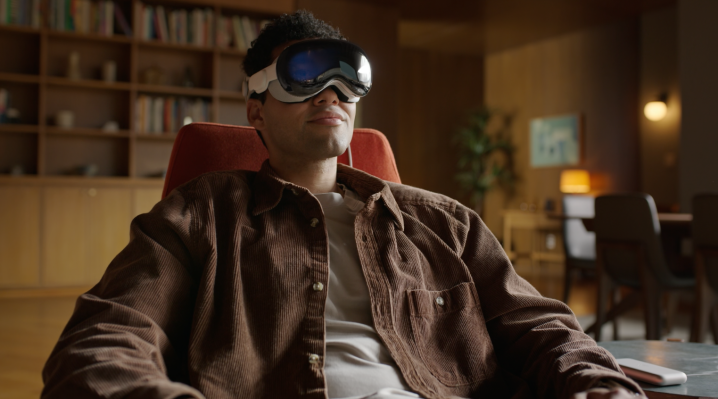
Apple’s Vision Pro headset is the biggest new product the company has revealed in almost a decade, yet there are serious warnings it might not be the massive success Apple wants it to be. Even for a company that’s as good at pulling the proverbial rabbit out of the hat as Apple is, it could be a struggle.
Read journalist Mark Gurman’s latest Power On newsletter and the picture looks grim. Gurman points out that Apple is looking for its “next big thing” to help restore revenues after a flat (or declining) quarter. Yet Gurman reckons that “it’s becoming clearer and clearer that the [Vision Pro] won’t be a major moneymaker for some time.”
Is he right? Well, if Apple wanted to generate a massive uptick in its earnings, a $3,500 mixed-reality headset might not have been the way to do it (at least on paper). After all, plenty of companies have tried to woo consumers with an advanced headset — all of them priced well below the Vision Pro — and none have really taken hold in the mainstream. Apple is trying to walk a path littered with the remains of those who came before.
The company’s approach probably isn’t helping. Instead of charging ahead with a rushed product that is full of compromises, Apple likes to bide its time and launch something that far outclasses everything else. That’s worked incredibly well in the past, but convincing regular Joes to spend $3,500 on an extremely niche product is a different challenge entirely.
The Apple Watch method

Gurman raises another point: thee way Apple is planning to roll out the Vision Pro could stymie its sales. You’ll have to make an appointment to test one out, and it will only launch in the U.S. at first. That’s a lot more friction than simply rocking up to an Apple Store and paying for one of the best iPhones.
Sure, Apple did something similar when it first launched the Apple Watch. Since the product was positioned as a luxury fashion item, Apple wanted to create an air of scarcity and opulence by selling it in high-end stores and requiring you to book an appointment ahead of time. Yet the company quickly changed tack when it became obvious that this approach wasn’t working.
According to Gurman, that course correction probably won’t happen with the Vision Pro. After all, the headset comes with a bunch of variables, including headband sizes and prescription lenses. And plenty of people will need convincing that a device like the Vision Pro is worth $3,500.
All of those factors lend themselves to a one-on-one session with an Apple Store employee. And if that’s the case, stores aren’t likely to see the product flying off the shelves any time soon.
Taking the long view

It seems that Apple knows the Vision Pro isn’t going to sell in huge numbers. Both the Financial Times and Apple analyst Ming-Chi Kuo have estimated the company will sell around 400,000 units in the first year, citing supply chain sources. That’s about four per day for each store in the U.S., the only country the Vision Pro will be sold in until the end of 2024.
Sure, Apple has a lot of money, and it might be willing to subsidize the Vision Pro for a while to help it get up to speed. But the company doesn’t have infinite patience.
That means it’s hard to be overly optimistic about the Vision Pro’s immediate future. I don’t think Apple is going to panic at the first sign of trouble — Gurman reported before the Vision Pro’s unveiling that Apple execs were taking the long view on this one, for example — but Apple is going to want sales to start picking up sooner rather than later. With the currently planned approach, that could be hard to achieve.
Changes are apparently afoot, with a cheaper headset reportedly in the works. And Apple has a knack for surprising people with products that sell beyond anyone’s expectations — just look at the initially derided Apple Watch. Can the Vision Pro repeat the same trick? I wouldn’t write it off entirely, but there’s a long way to go yet.



